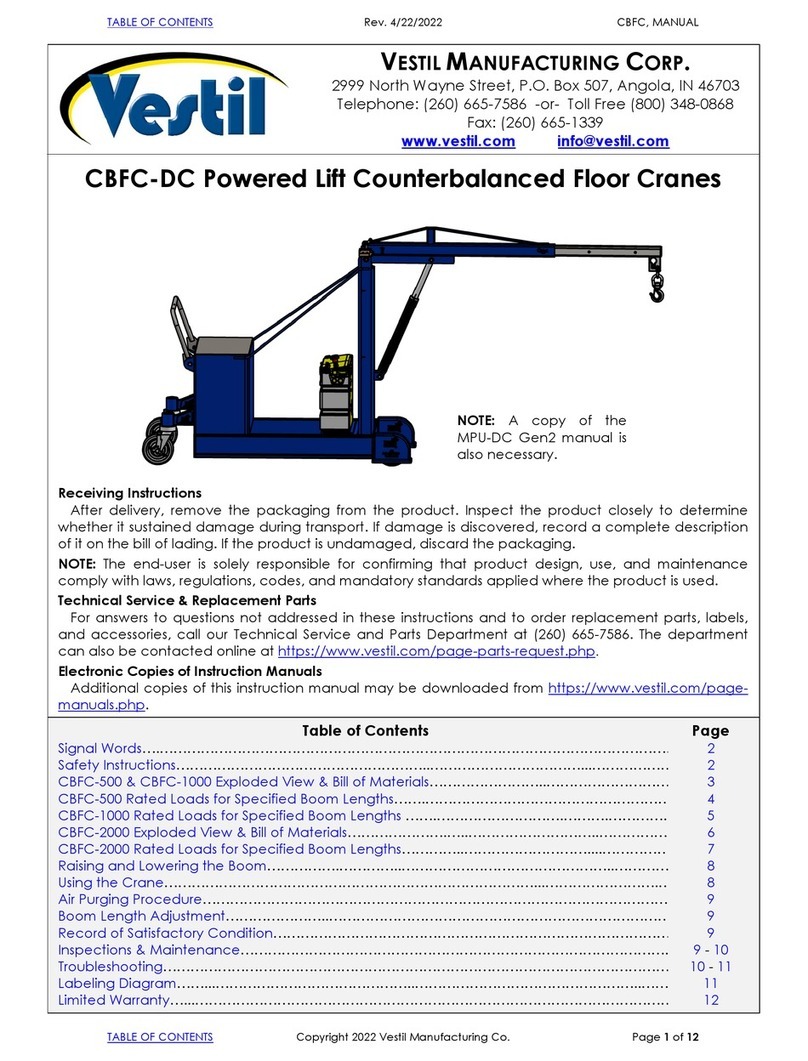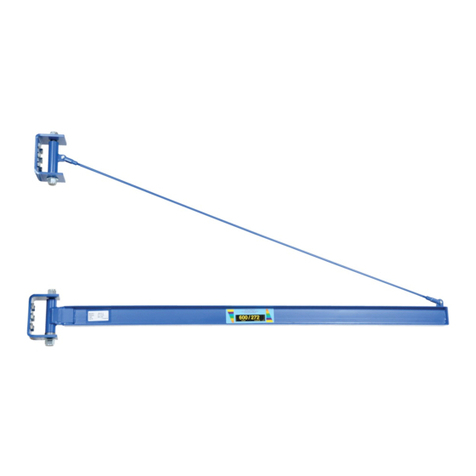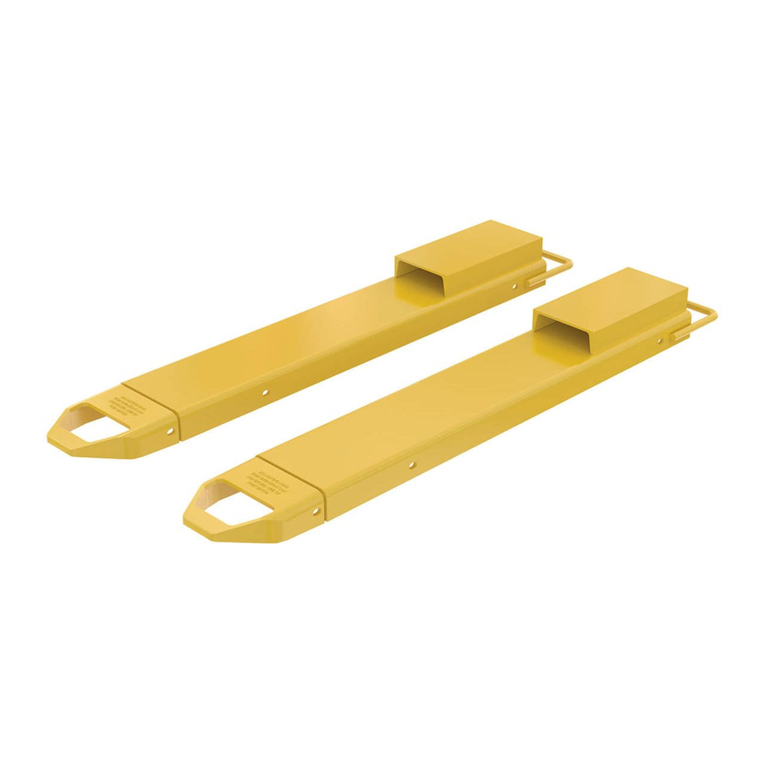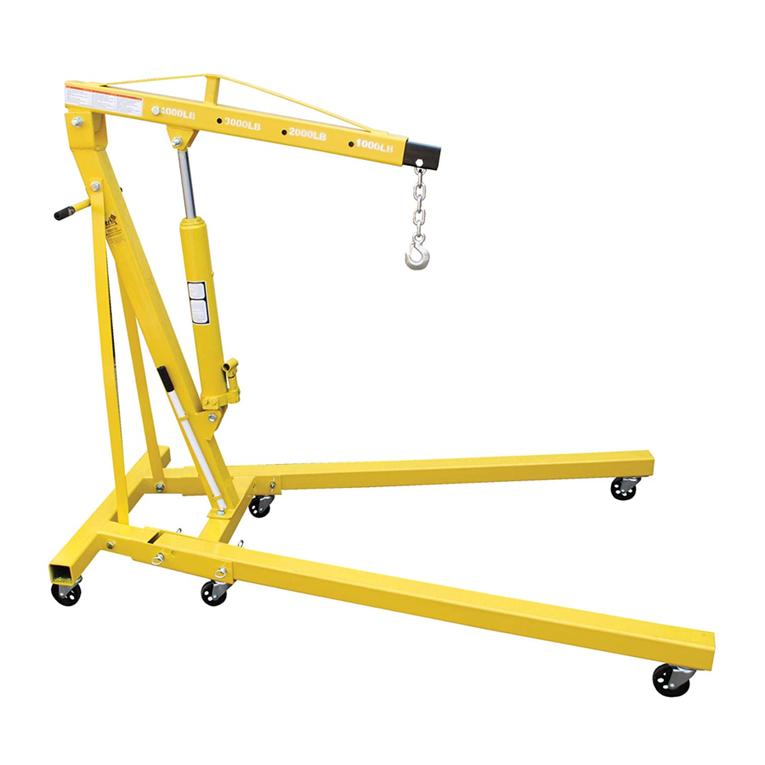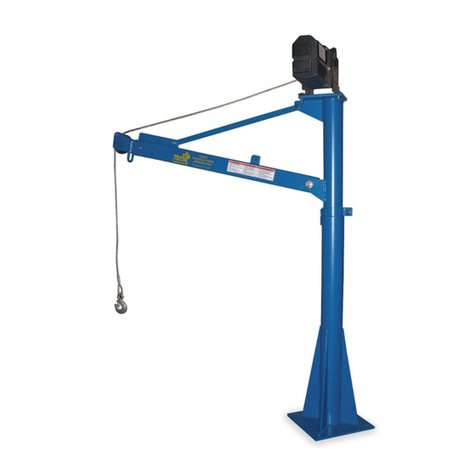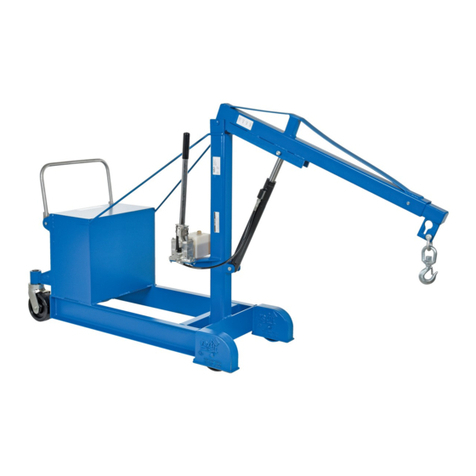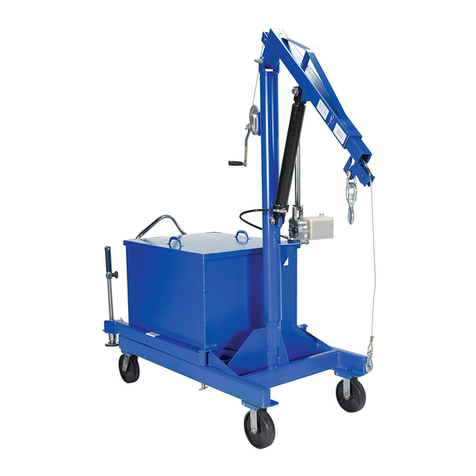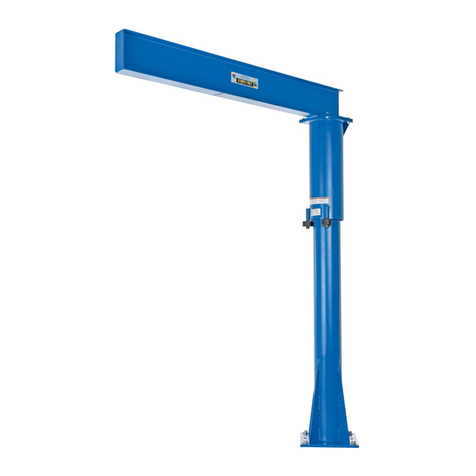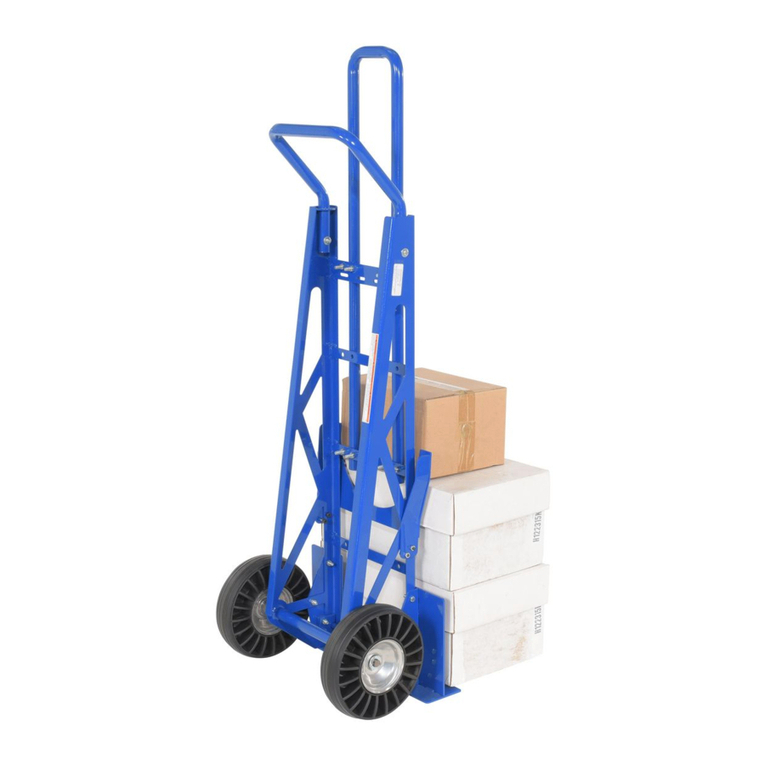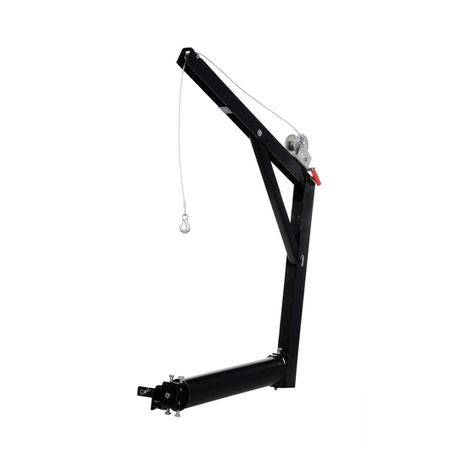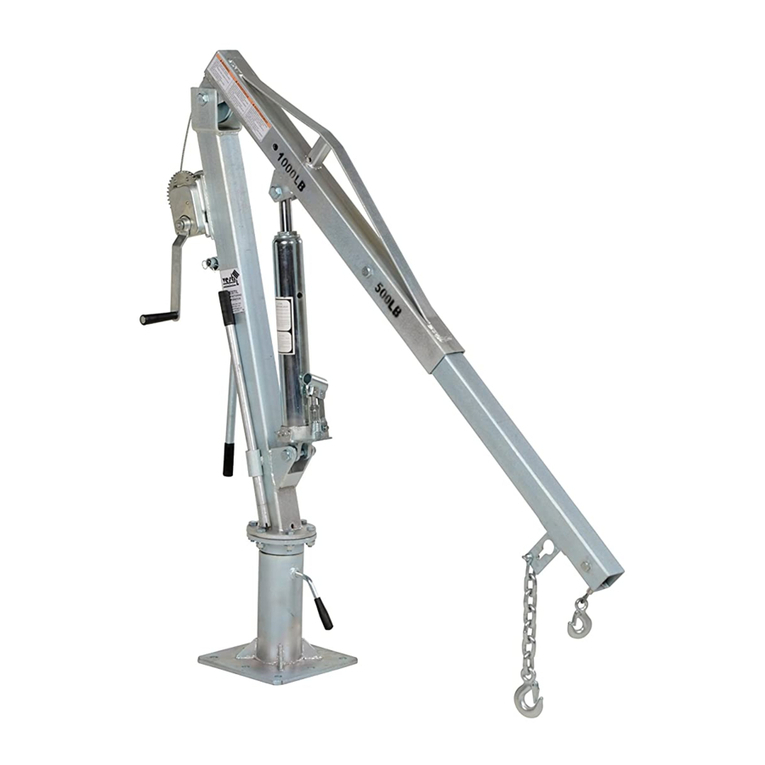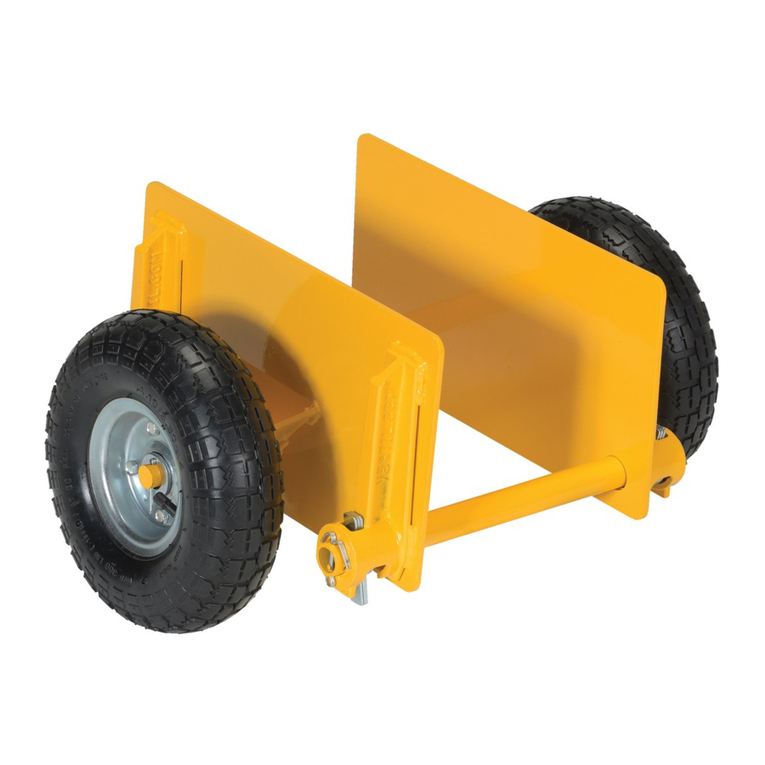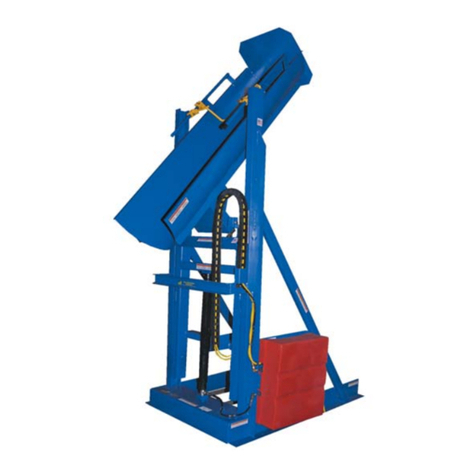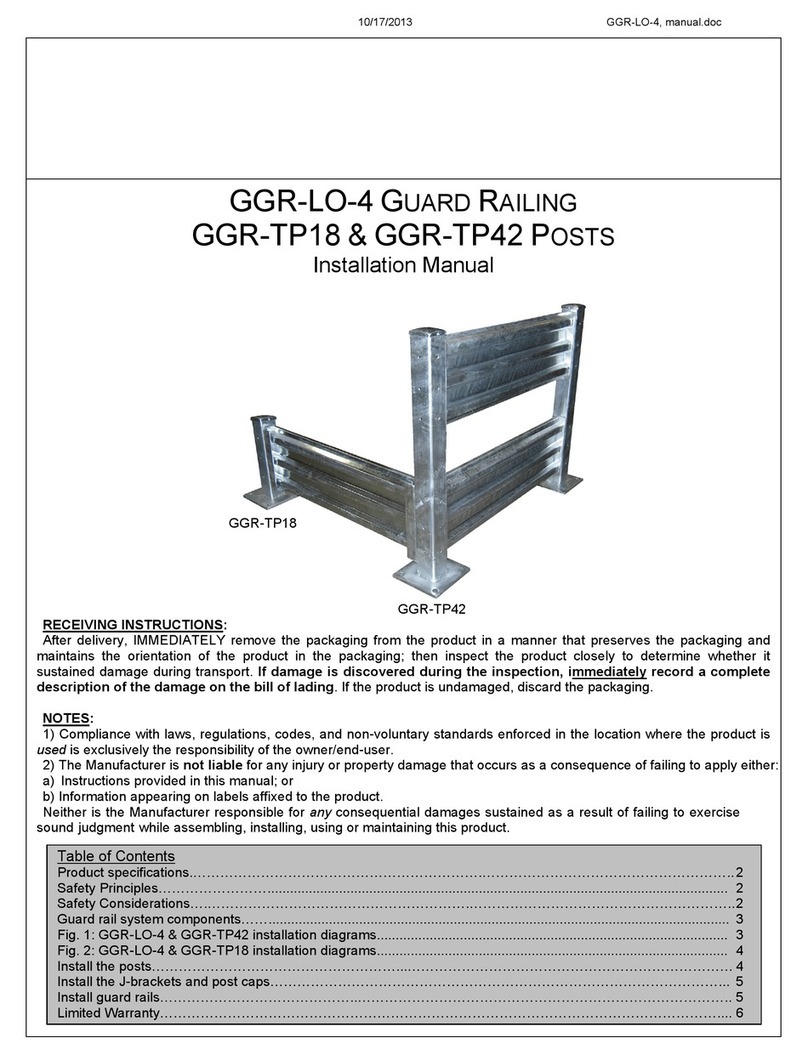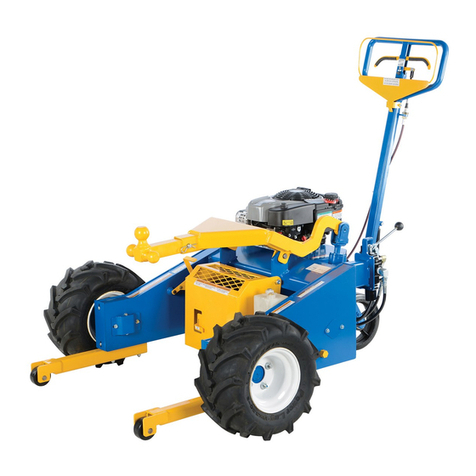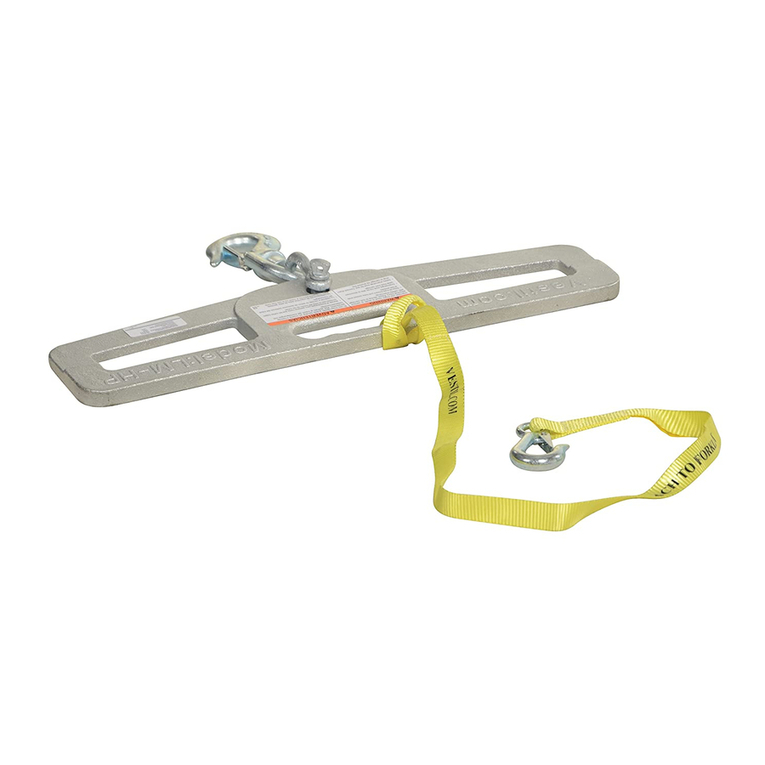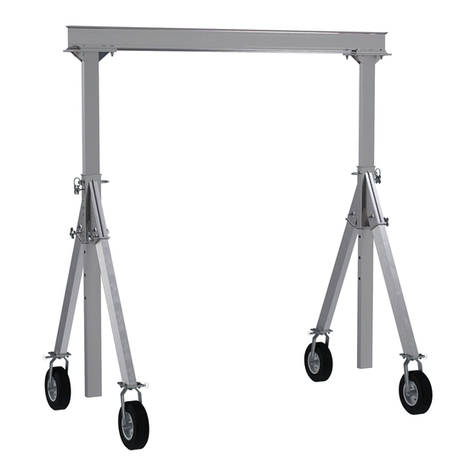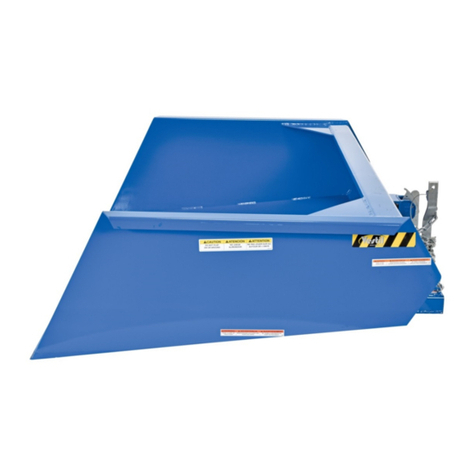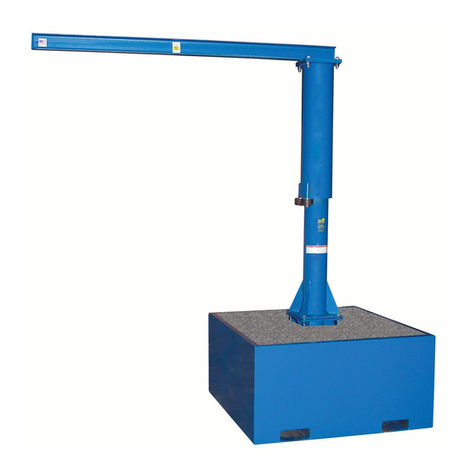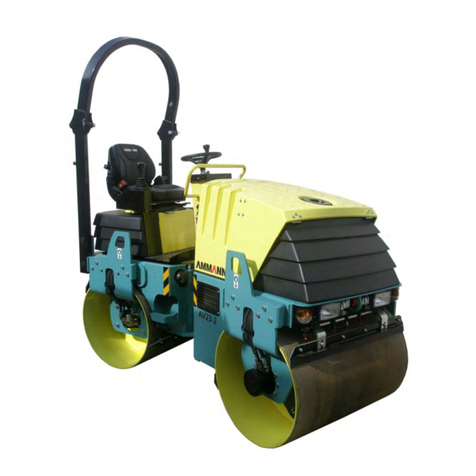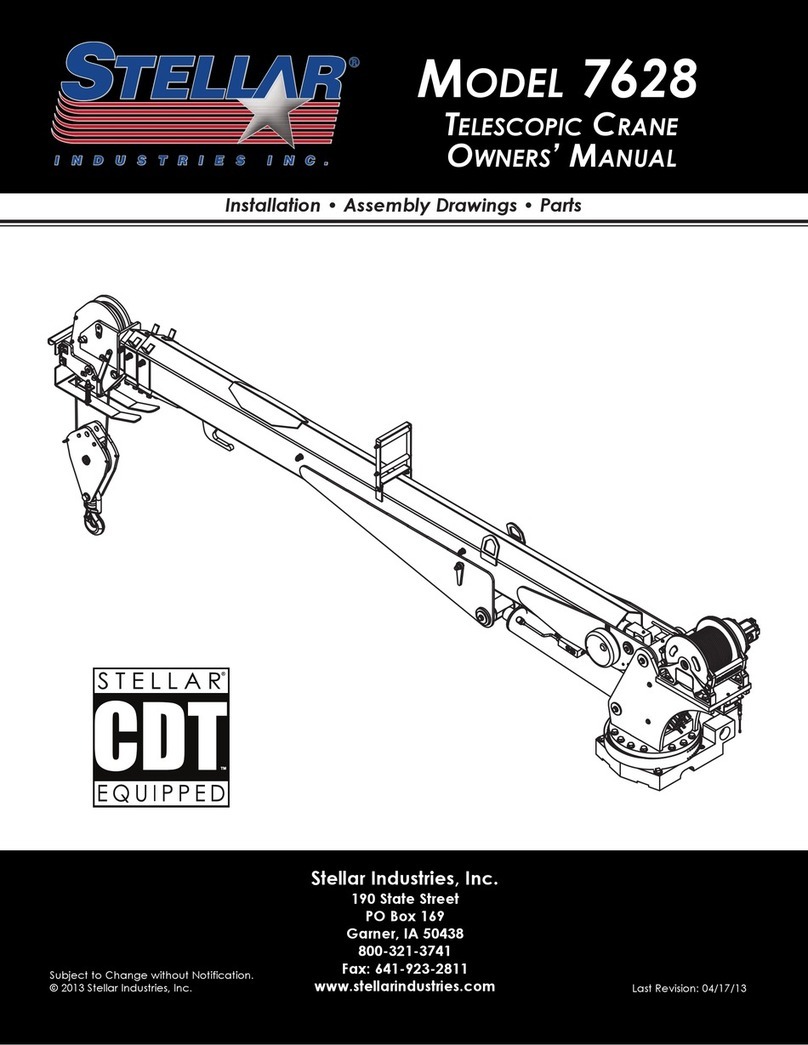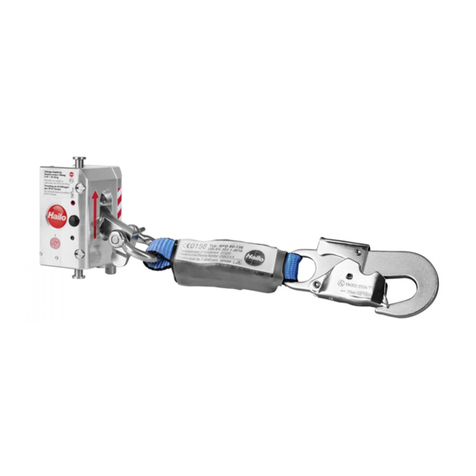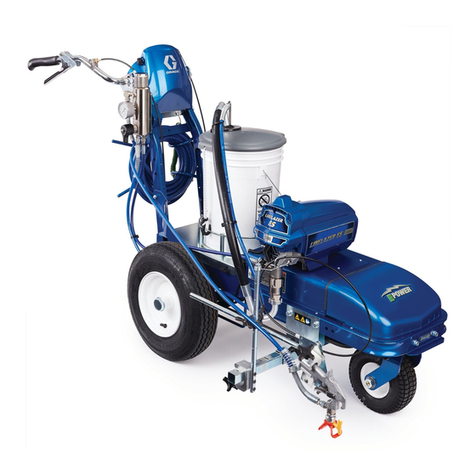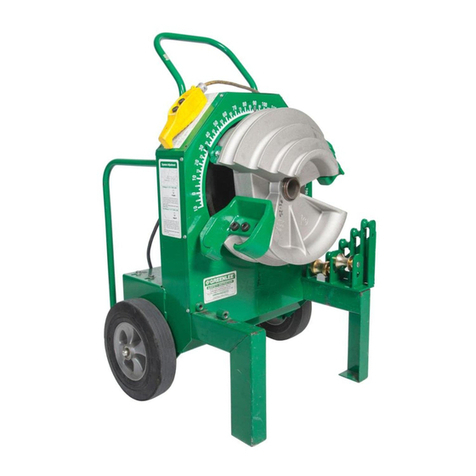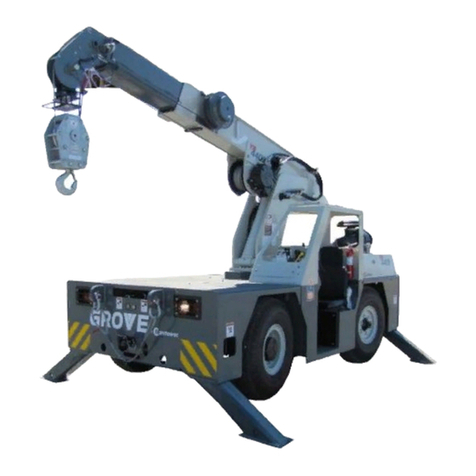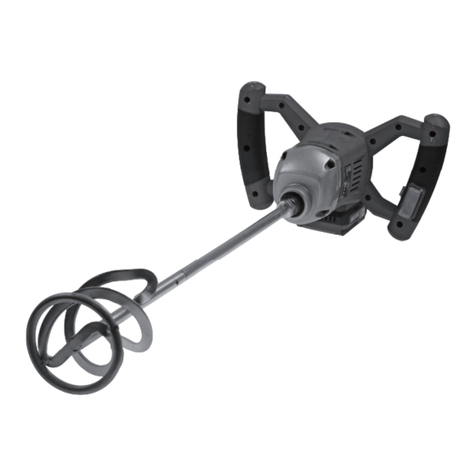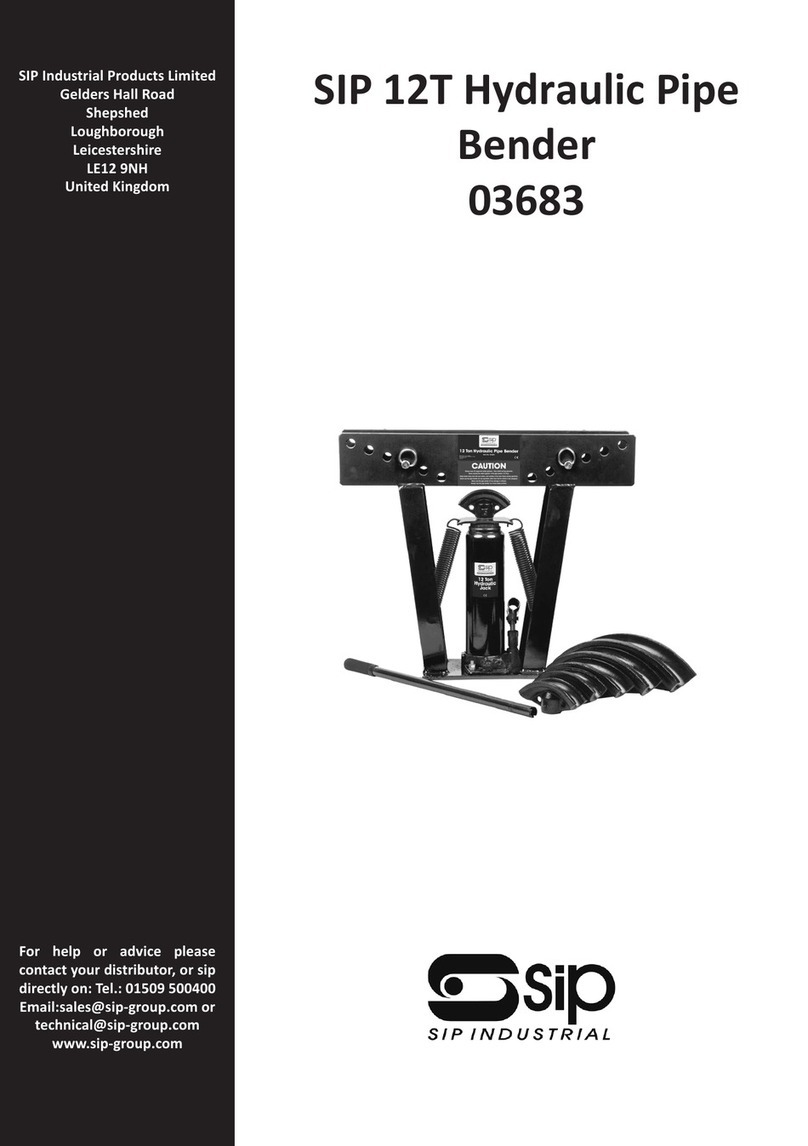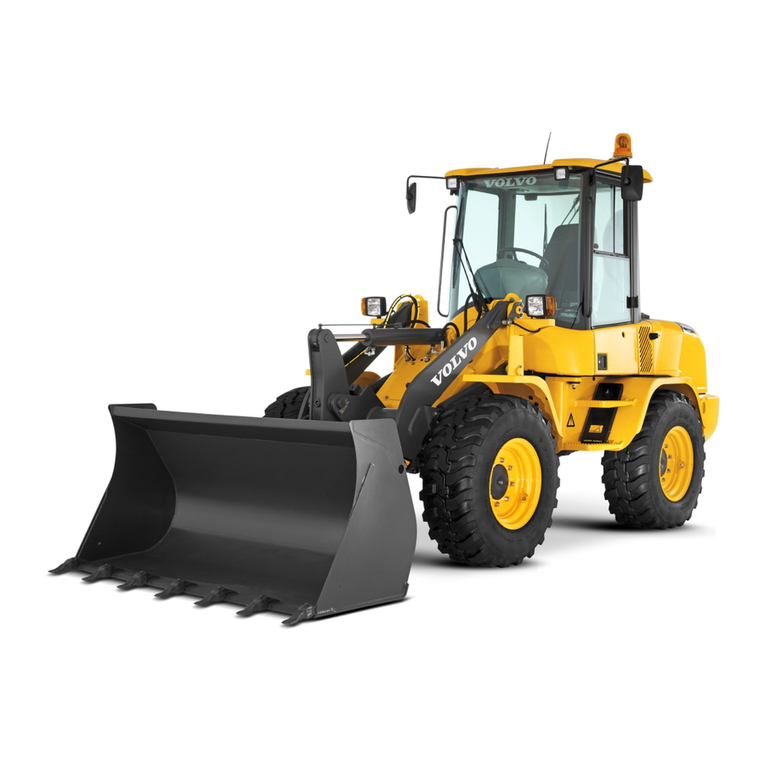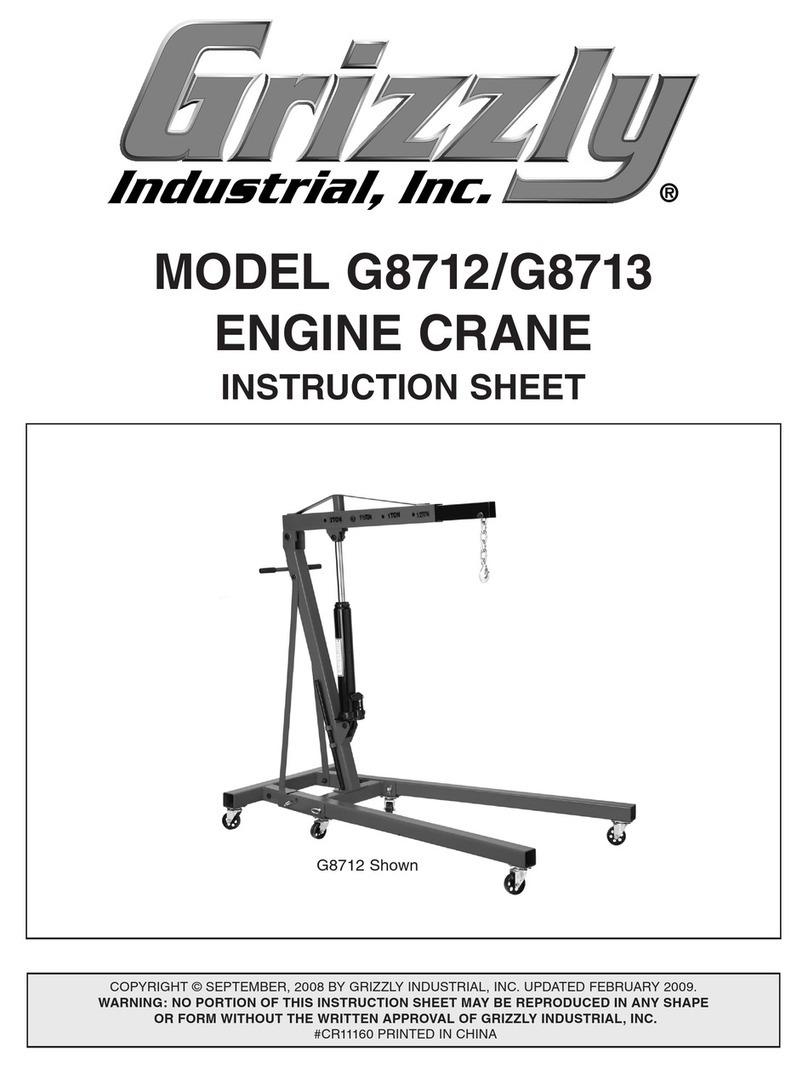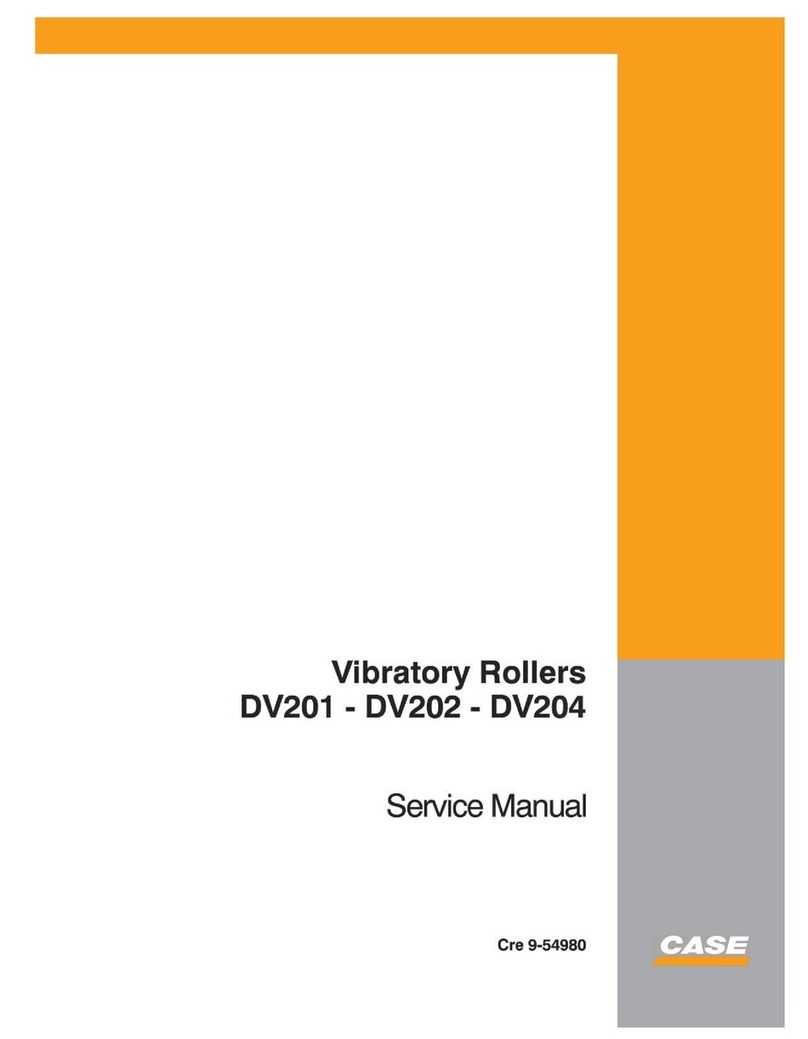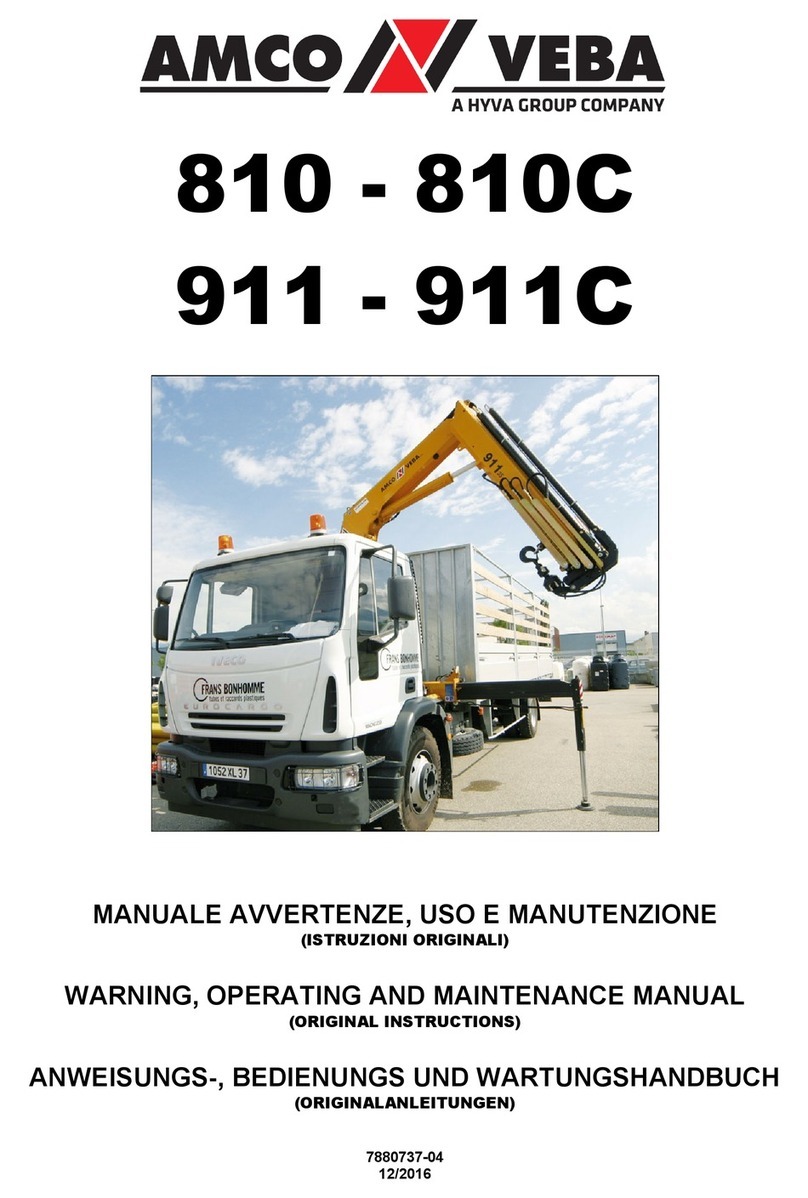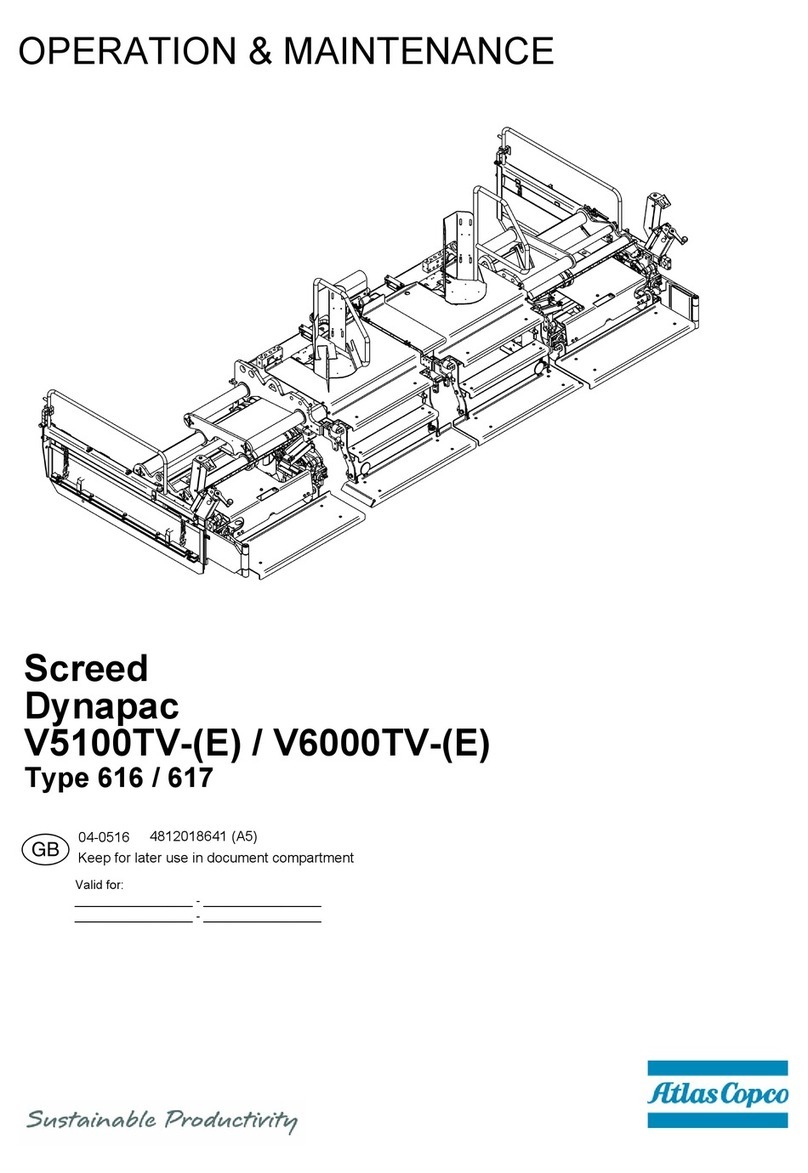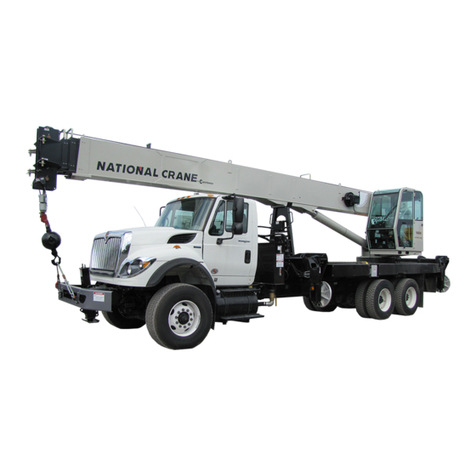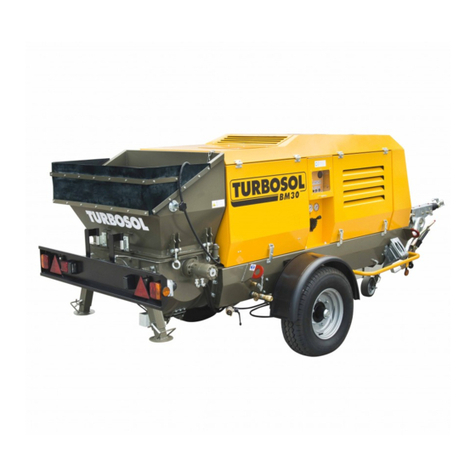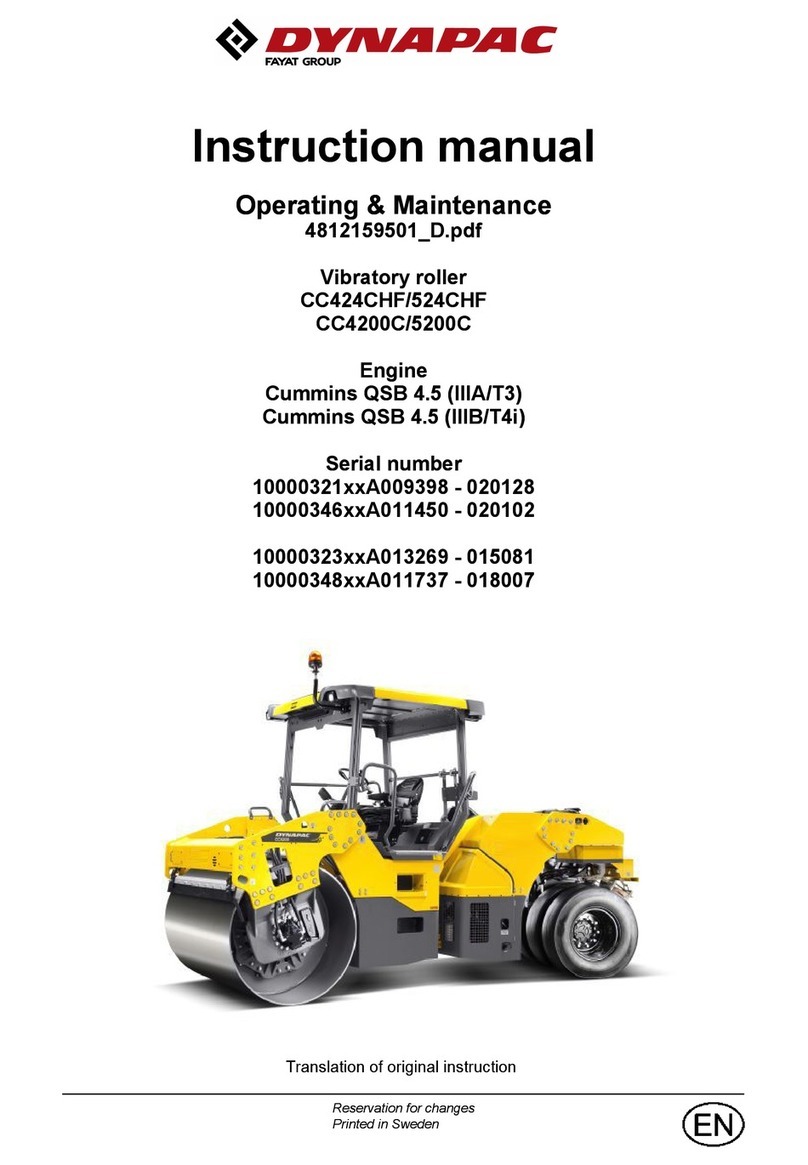
Rev. 3/14/2017 P-JIB, MANUAL
Copyright 2017 Vestil Manufacturing Co. Page 8of 11
Operating the crane:
The floor crane must be used only on improved surfaces (concrete or asphalt) that are even and level.
1) Attach appropriate rigging to the load.
2) Carefully push the crane to the work location;
then low.
3) Position the outriggers and deploy the floor
locks. Outriggers can be rotated out to the
side of the crane to enhance stability. Always
keep the load between the outriggers (don’t
rotate the load beyond the outriggers).
To deploy the floor locks, rotate the hand
cranks clockwise until the feet solidly contact
the floor but do not lift the front casters off of
the ground.
4) Adjust the position of the boom.
a. To raise the boom, move the pump
handle back-and-forth.
b. To lower the boom, slowly turn the
release lever counterclockwise until the
boom begins to lower. To increase the
lowering speed, turn the release lever
further counterclockwise. Close the
release valve when boom adjustment is
complete by turning the release lever
clockwise until the connection is tight.
5) Attach the rigging to the stationary hook at the
end of the boom. If the stationary hook cannot
be lowered enough engage the rigging,
connect the rigging to the winch hook. The
winch hook capacity is always 800 pounds
(363.6kg), regardless of boom length. To raise
and lower the winch hook, turn the winch
handle in the appropriate direction (see
diagram).
Prevent load swing! Be sure that whichever
hook is used is centered above the load
before raising it. Do not raise the boom or the
winch hook until the hook is centered above
the load.
NOTE:Add the weight of all rigging to the
weight of the load to calculate the net weight
applied to the crane. The net weight must be
less than or equal to the capacity of the crane.
Capacity decreases as the boom is extended
(see FIGS. 1B, 2B on pages 4 and 6).
6) Slowly raise the load until it is a few inches off of the ground.
a. The load should not swing as it rises.
b. The crane should not tip or rock when the load is suspended.
c. If the crane is unstable, lower the load and adjust rigging.
d. The mast rotates to allow the user to move loads to either side of the crane. Rotate the boom slowly when
loaded. Don’t rotate the load beyond the outriggers.
7) Lower the boom until there is slack in the rigging and disconnect the load from the hook.
Operating the hand pump:
The hydraulic pump controls up-and down-movement of the boom. With the lowering lever in the closed
position (rotated clockwise until the connection is snug), move the pump handle back-and-forth to extend the
cylinder. As the cylinder extends, the end of the boom rises and elevates the hooks.
To lower the boom, slowly rotate the release lever counterclockwise. The farther the lever is turned, the faster
the boom lowers. To change load elevation but not lower the load completely, simply close the release valve
when the load is at the desired height, i.e. turn the lever clockwise until the connection is snug.
Stationary
hook
Winch
hook
Floor
lock
Boom
Winch
Raise
Lower
Tank
Pump handle
Fill plug
Release
lever
Hand
pump
Hand
crank
Mast
Outrigger
